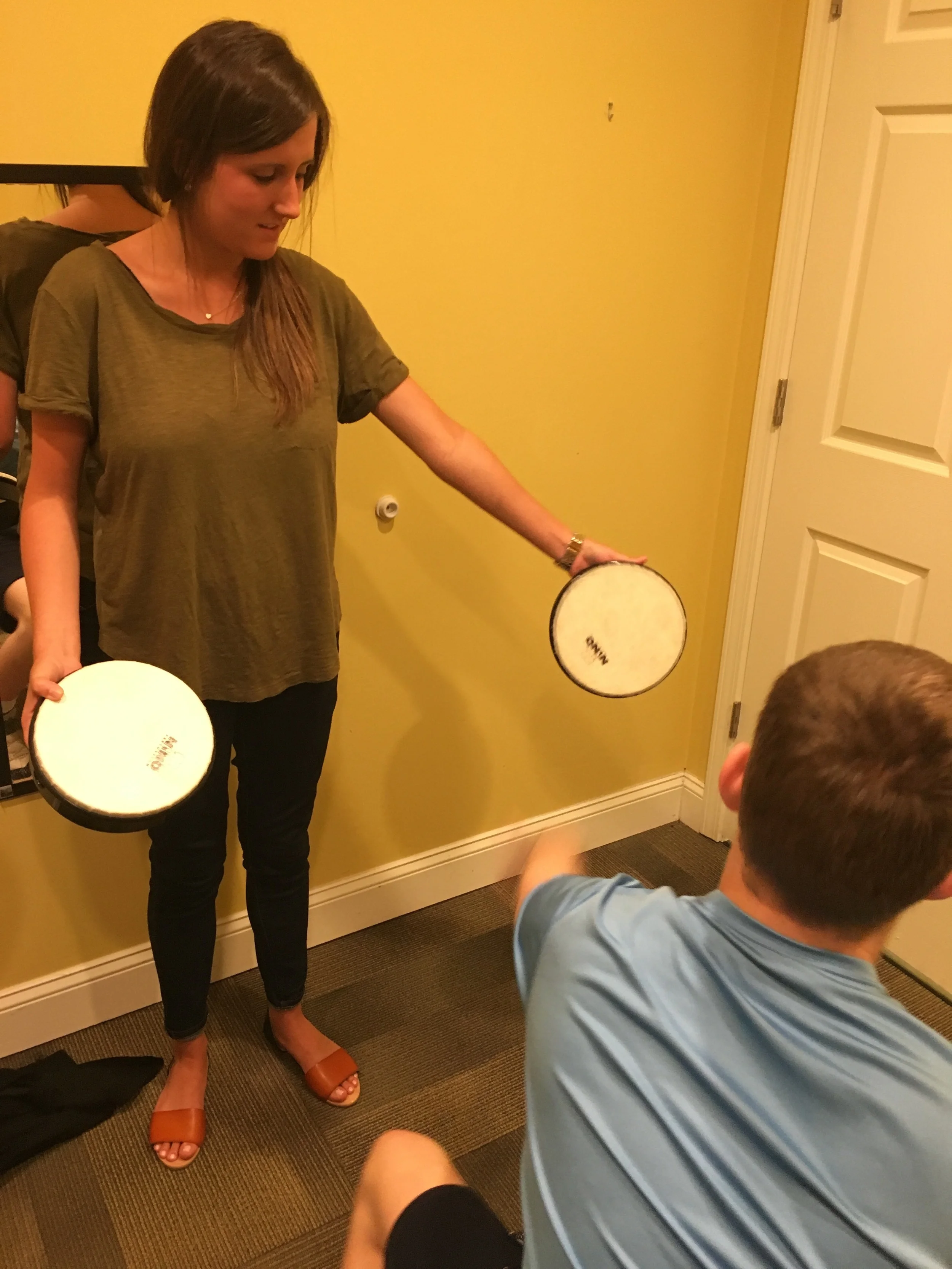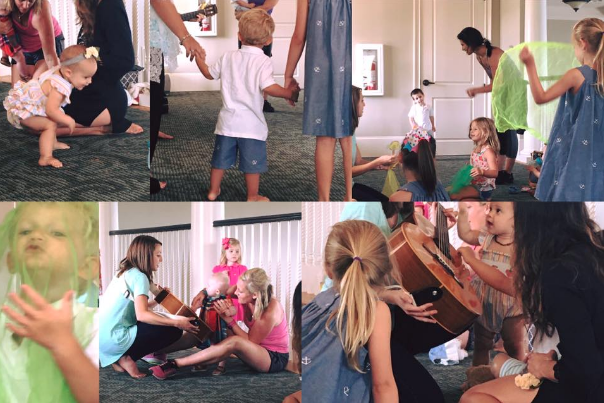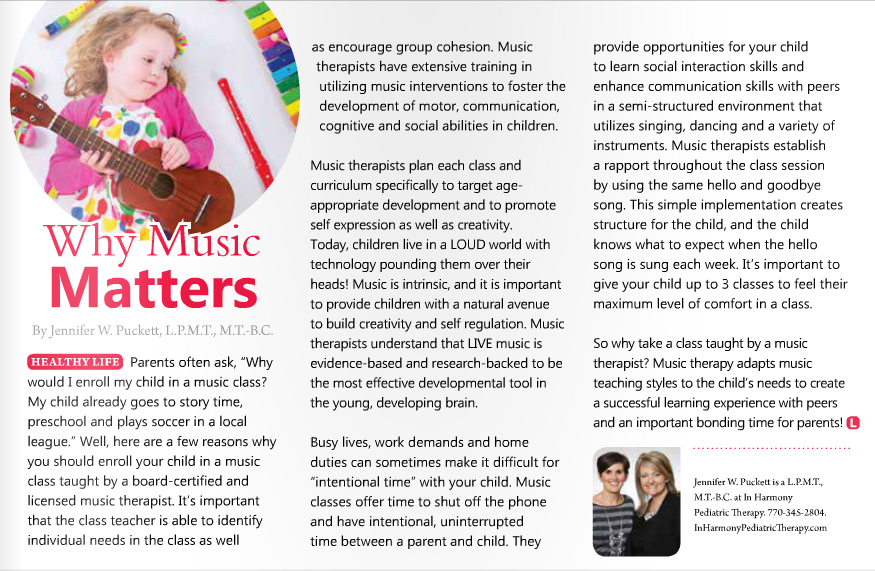I am in the middle of Week 3 of my internship and I feel like I have already learned so much! These past few weeks have been very enlightening for me. I have really enjoyed getting to meet the clients and families here, along with the entire team at In Harmony Pediatrics. Everyone is so welcoming and it is evident that there is a spirit of joy and determination in this facility.
As I look back on my first few weeks as an intern, I feel so blessed and thankful to have been chosen to be a small part of what is happening here at Therabeat, Inc. Each therapist inspires me with their creativity and resourcefulness. It is such a positive and fun environment that I don’t ever feel like I am actually working when I am planning, creating visuals, and doing interventions.
This week, I began implementing interventions with each client that I see during the week. One of the clients that I see has difficulty creating a complete sentence. When she wants something, she typically just points to an object and vocalizes using a non-specific word approximation. I decided to make it an objective for her to say in a full sentence what she wants in each session. I created a song called, “What do you want?” where she has to put images of the things that she wants on a poster and then sing it in a complete sentence. During the session, whenever she wanted something, I would have her sing it to me like we did in the song. I am hoping that she will be able to demonstrate generalization of this goal by saying what she wants in a complete sentence each time. I
love these kids already and cannot wait to watch them grow and develop for the next six months. I am so happy to be on this journey to becoming a board certified music therapist and can’t wait to see what the rest of my internship holds!
One of the first things that I noticed when I began my internship last week is that many of these children have specific behavioral goals that they are working on. In one of the sessions last week, I learned that one client is getting ready to go to a new school. In order to prepare him for new social situations, one of the therapists helped him create a social story on an app called “Story Creator”. I was so intrigued by this technological tool that I decided to do some research on the effectiveness of musical social stories. Although this research does not specifically study the effectiveness of iPad apps, it focuses on how creating social stories and singing them with children who have autism can assist in reinforcing positive behavior so that they will be prepared for every social situation.
Research
Brownell, Mike D. (2002). Musically adapted social stories to modify behaviors in students with autism: four case studies. Journal Of Music Therapy, 39 (2), 117-144.
Social stories are a means of incorporating an individual with autism’s propensity toward visual learning with educationally necessary behavior modifications. In this study, a unique social story that addressed a current behavioral goal was created for 4 first- and second-grade students with autism. Original music was composed using the text of the social story as lyrics. The independent variable included three treatment conditions: baseline (A); reading the story (B); and singing the story (C). The dependent variable was the frequency with which the target behavior occurred under each condition of the independent variable. Data were collected as frequency tallies of the targeted behavior exhibited by the student, or responses to these behaviors made by teachers. The conclusion was that both the reading (B) and singing (C) of the created social story were significantly more effective in reducing the target behavior than the no-contact control condition (A). The singing condition was significantly more effective than the reading condition in Case Study III. The results of this study suggest that the use of a musically adapted version of social stories is an effective and viable treatment option for modifying behaviors with this population.
Here are some apps that you can use with your child to create stories that focus on specific behavioral goals.
Apps:
Social Stories
My name is Ricardo Hurtado. I am a dad, a husband, a business owner and a music therapy intern from the University of Georgia. I started my internship program at Therabeat back in January. Before my internship, I only had the experience of implementing music therapy interventions during my clinical hours at UGA. These were mostly group-based music therapy sessions conducted under the supervision of a certified music therapist with different populations including: special needs children and adolescents, substance abuse adults, geriatric patients, amongst others. Although this gave me the initial experience needed for the internship phase of my career, it was when I started implementing a combination of one-on-one and group-based music therapy interventions at Therabeat that I got to really grasp what music therapy is all about and the "mechanism" that makes it work so efficiently in patients.
At Therabeat, music therapy is provided to a variety of populations, where a broad spectrum of levels of development and functioning is part of the ongoing daily treatments. Furthermore, it is when I am face-to-face with the patient conducting an intervention, that I come to realize that my music skills and the therapeutic knowledge I gained in school, though critically important, are not enough for success. To procure a goal-achieving therapeutic experience for the patient, it is also of essence that the therapist equip his/her self with a combination of knowing the patient with a holistic approach and preparing a proper individualized music therapy session.
It is not enough to know your patient's diagnosis and level of functioning to prepare your therapy session plan. I learned that I also needed to examine and consider the patient's character and behaviors, learning strengths and weakness, motivators and triggers, preferences, sensory tolerance, relevant daily living experiences, amongst other things. For example, in one particular case, I had prepared a music therapy intervention that was structured to strengthen the patient's understanding of the names and sequence of the days of the week. I prepared some visuals to go along with the song. When I conducted the intervention, I noticed that the patient lost interest soon after I started it. However, my goal was to keep the patient engaged throughout the intervention. My supervisor suggested I use specific visuals for each day of the week that would represent something personal to the patient. So, I discussed with the patient's mother, and inquired about the activities the patient usually does during the week. For instance, I found out that the patient did speech therapy on Mondays and on Wednesday the patient did music therapy. During the other week days, the patient just had regular school day. And, during the weekend, the patient just had family time. So, I did new visuals with figures that would represent these activities. I tried the intervention with the patient the next week, and it worked perfectly! The patient engaged and participated with enthusiasm throughout the entire intervention.
Providing one-on-one music therapy sessions has been an exciting and challenging learning process for me so far. Music therapy is beneficial to patients but it is necessary that all aspects of therapy and treatment are taken into consideration and are carefully individualized for each patient. I am very fortunate and grateful for the opportunity that Therabeat provides for me. Working with the patients and families has allowed me to grow and prepare myself in this amazing profession.











